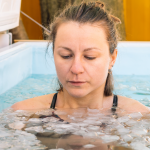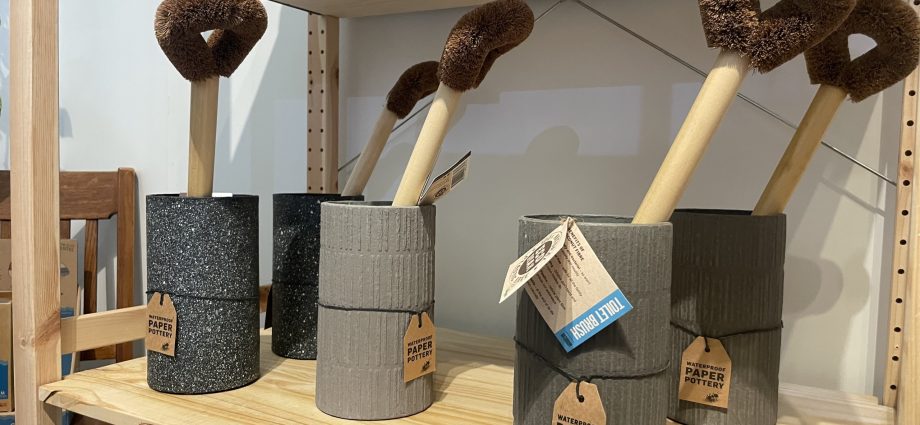Let’s be honest. Having sensitive skin is like having a fussy houseguest. They complain about everything. Now, throw in an arid desert wind or a sub-zero deep freeze? That guest is having a full-blown meltdown. Your skin barrier—that all-important shield—is under constant assault from the elements. But here’s the deal: you can absolutely find a rhythm that works. It’s not about a 10-step routine; it’s about smart, strategic steps that protect and comfort.
Understanding Your Skin’s New Enemy: The Climate
Extreme climates, whether brutally cold or intensely hot and dry, do one thing really well: they strip moisture. Cold air holds less humidity, and indoor heating creates a parched environment that sucks the life out of your skin. On the flip side, hot, dry climates and relentless sun exposure cause transepidermal water loss at an alarming rate. For sensitive skin, this means redness, flakiness, stinging, and that tight, uncomfortable feeling—almost like your face is two sizes too small.
The Golden Rules: Your Sensitive Skin Commandments
Before we dive into products, let’s lay down the law. These aren’t just suggestions; they’re non-negotiables for keeping your skin happy when the weather is anything but.
1. Simplify, Simplify, Simplify
When your skin is stressed, the last thing it needs is a cocktail of 15 active ingredients. Pare your routine down to the essentials: a gentle cleanser, a serious moisturizer, and a dedicated sunscreen. Think of it as a minimalist wardrobe for your face—only the most reliable, versatile pieces.
2. Listen to Your Skin (No, Really)
Some days, your skin might need a rich balm. On others, a lighter lotion might suffice. Pay attention to its signals. Is it stinging? Scale back. Feeling tight? Add a hydrating layer. This isn’t a set-it-and-forget-it situation; it’s a daily dialogue.
3. The Patch Test is Sacred
Introducing a new product in an extreme climate? Always, always patch test. Apply a small amount to your inner arm or behind your ear for a few days. Your face will thank you for not ambushing it with a potential irritant.
Building Your Extreme-Climate Beauty Routine
Okay, let’s get into the nitty-gritty. Here’s a breakdown of what your day and night should look like.
Morning: Protection and Prep
Cleanser: Skip the harsh foams. Opt for a creamy, non-foaming cleanser or even just a splash of lukewarm water. The goal is to preserve your skin’s natural oils, not strip them away first thing in the morning.
Serum: A hydrating serum with humectants like hyaluronic acid or glycerin is your best friend. It draws moisture into the skin. Pro tip: apply it to damp skin to lock in that hydration. Honestly, it’s a game-changer.
Moisturizer: Look for formulas with ceramides, cholesterol, and fatty acids. These ingredients are the literal mortar between your skin’s bricks, repairing that vulnerable barrier. A rich, emollient cream is your shield.
Sunscreen: This is non-negotiable. For sensitive skin, mineral sunscreens with zinc oxide or titanium dioxide are often less irritating. They sit on top of the skin, acting as a physical barrier against UV rays—which are even more damaging when reflected off snow or sand.
Evening: Repair and Replenish
First Cleanse: If you wear sunscreen or makeup, start with a gentle micellar water or a cleansing oil. They break down impurities without a harsh tug-of-war on your skin.
Second Cleanse: Follow up with that same gentle, creamy morning cleanser to ensure everything is off without over-stripping.
Moisturizer or Sleeping Mask: This is when your skin does its heaviest lifting—repairing itself. Slather on a thicker moisturizer or a hydrating sleeping mask. Ingredients like squalane and shea butter are superstars here, creating a protective seal that allows your skin to drink up all the goodness overnight.
Special Considerations: Hot/Dry vs. Freezing Cold
While the basics remain, you might need to tweak your approach based on your specific climate battle.
For Scorching, Arid Heat
Hydration is everything. You might need to layer a hydrating toner under your serum. Look for products with aloe vera or centella asiatica to soothe any heat-induced redness. And a facial mist? Keep it in the fridge for a mid-day cool-down that also adds a hit of moisture.
For Bitter, Dry Cold
It’s all about occlusion—sealing moisture in. After your serum and moisturizer, a thin layer of a pure occlusive like petroleum jelly or a balm on the driest areas (cheeks, under eyes) can prevent windburn and chapping. And for the love of skin, don’t take steaming hot showers! Lukewarm water only.
Ingredients to Embrace and Avoid
| Seek Out These Heroes | Avoid These Aggravators |
| Ceramides | Alcohol (denat. or SD) |
| Hyaluronic Acid | Fragrance (natural & synthetic) |
| Oat Extract | Essential Oils |
| Squalane | Harsh physical exfoliants |
| Shea Butter | Sulfates (SLS/SLES) |
This isn’t an exhaustive list, you know, but it’s a solid guide. When in doubt, look for products labeled “fragrance-free” and “for sensitive skin.” “Natural” doesn’t always mean gentle—peppermint and lemon can be seriously irritating.
Lifestyle Tweaks That Make a Real Difference
Your routine isn’t just what’s in the bottle. It’s the stuff around it, too.
- Humidify Your Space: Running a humidifier, especially in your bedroom at night, counteracts dry indoor air. It’s like giving your skin a constant, gentle drink.
- Protect Your Face: Seriously, don’t be shy about wearing a scarf over your face in freezing wind or a wide-brimmed hat in the blazing sun. Physical barriers work.
- Stay Hydrated: It sounds so simple, but drinking enough water supports your skin’s health from the inside out.
Navigating extreme climates with sensitive skin is a practice in patience and kindness—to yourself. It’s about building a fortress of hydration and protection, then calmly repairing the breaches when they happen. The goal isn’t perfection; it’s peace. Finding that quiet confidence that comes with knowing your skin can handle whatever the forecast throws its way.











